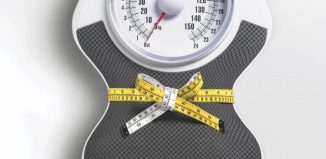Salt: Too much or too little?
Too little salt is unlikely for most of us
This is the first of a two-part series on salt. Salt, or sodium, is one of the most pervasive essential nutrients in our diet. While we need exogenous (external) salt, the debate on the amount we need continues. Are we getting too much or too little? A recently published study would indicate that the extremes – too much and too little – are dangerous. The newspaper headlines from this study suggest that reducing sodium may be harmful.
Is this true or is it hyperbolized? We will investigate this study in much more detail. However, I will say this: Many Americans get far more than the recommended amount of sodium intake, regardless of which guidelines you are using. Very few individuals suffer from dietary sodium deficiency.
So what are the guidelines, and how much are Americans consuming on average? According to the Centers for Disease Control, the U.S. government recommends no more than 2,300 mg of sodium per day (1). But for those who are over 50 years old, are African American or who have high blood pressure, diabetes or chronic kidney disease, then sodium should be restricted to less than 1,500 mg per day. One teaspoon of salt is the equivalent of 2,300 mg of sodium. The World Health Organization recommends less than 2,000 mg per day (2) and the American Heart Association recommends less than 1,500 mg for everyone (3). This is approximately two-thirds of a teaspoon of salt. The average amount Americans consume is 3,300 mg per day.
This is not about the salt shaker, though. Most people protest that they don’t use salt or processed foods, which are notoriously high in sodium. Sodium lurks in many places, though.
What are the potential obscure sources of sodium? Participants in a recent study were able to identify that processed foods were a major source of sodium and its excess; however, less than one-third knew that bread, pasta, cereal and cheese were major sources (4). Other sources include soups (yes, even many “healthy” soups); many frozen foods; condiments, including salad dressings; and sauces, especially spaghetti sauces, regardless of whether or not they are organic. So, if we include bread, sauces and cheese, that makes pizza one of the worst offenders! Also remember that eating out significantly contributes to increased sodium intake.
I had an interesting situation occur recently with a patient. After one month, he came back for a visit. During that month he went on vacation for a couple of weeks. We looked at his body composition. While he gained 5 pounds, what was surprising was that he actually lost 12 pounds of body fat, but gained 17 pounds of water weight. He had said he was eating really well. Unfortunately, he was unable to control for salt intake while eating out. Thus, as a consequence, he had significantly swollen ankles and significantly increased blood pressure that was uncontrolled. Even over a short period of time, salt can have a large impact on the body.
What are the potential short-term symptoms of too much salt? They can include headaches, dizziness, dehydration, edema (swelling), arrhythmias and weight gain.
Too much salt can increase our risk of disease or exacerbate pre-existing diseases. For instance, salt can raise blood pressure and contribute to kidney stones, osteoporosis, diabetes and chronic kidney disease. It can also exacerbate autoimmune disease, such as rheumatoid arthritis and Sjögren’s, and increase the risk of cardiovascular disease and mortality from CVD and all-causes (5). There are several studies that emphasize the impact of sodium on cardiovascular disease globally.
Also, don’t fall for the idea that when we exercise most of us need sodium replenishment. If we exercise strenuously – on the level of football players or marathon runners – then, yes, we need more sodium (6). However, for the rest of us who exercise no more than 90 minutes every day at a vigorous pace, it is unlikely that we require additional sodium.
One of the most frequent questions I am asked is whether there are any benefits from using Himalayan salt, kosher salt or sea salt instead of regular table salt. When we talk about symptoms or disease consequences from excessive salt consumption, it doesn’t matter whether the source is a more sophisticated form of salt. The effects are the same. Salt is salt! Let’s look at the evidence.
Impact of salt extremes
In the Prospective Urban Rural Epidemiology study, an observational study, results showed that participants who were at the “extremes,” those who had high amounts of sodium and those who had low amounts of sodium, all experienced higher risk of cardiovascular events and all-cause death (7). When blood pressure was factored in, those in the higher sodium group did not have significantly increased cardiovascular events.
There were three groups in the study: those who excreted high amounts of sodium, defined as greater than 6,000 mg or the upper “extreme”; moderate amounts, defined as 3,000 mg to 6,000 mg; and low amounts, defined as less than 3,000 mg or the lower “extreme.” There were over 100,000 participants from 17 countries. The duration of the study was approximate 3.5 years. The amounts of urinary sodium excreted were based on an estimated 24-hour urine output, which is a way of measuring sodium intake. The results also showed that increasing potassium levels greater than 1,500 mg had the opposite effect of sodium, decreasing the risk of cardiovascular events and death. The potassium levels were a 24-hour estimate, as well.
A weakness of this study was that data were based on one urinary sodium excretion in the morning and then extrapolated out to 24-hour urine output, which is considered a better biomarker. Nonetheless, there was only one reading per participant and this was not a 24-hour reading. Thus, this is not a very accurate way to measure sodium, since it was a single snapshot view.
Even if one did suffer from not enough sodium, causing hyponatremia (low sodium in the blood), eating more from the diet might perpetuate increased thirst and, thus, potential fluid overload. This could lead to edema and even lower sodium.
Therefore, from this study, we don’t know if sodium of less than 3,000 mg per day is dangerous. There were two times more participants who had high sodium excretion compared to low sodium excretion, and there were seven times as many participants with sodium levels greater than 4,000 mg than those with levels less than 3,000 mg. Granted, low sodium may be an issue, but what is really too low? We don’t know, and it does not happen often.
We as a society consume much more than any of the guidelines suggest. It would be a disservice to believe that adding more salt to your diet would not be harmful or that not reducing your intake is okay. So don’t reach for the salt shaker and read labels carefully. Rather reach for foods that have high levels of potassium and naturally occurring sodium such as green leafy vegetables.
References:
(1) www.cdc.gov. (2) www.who.int. (3) www.heart.org. (4) Appetite. 2014;83C:97-103. (5) www.uptodate.com. (6) Evid Based Nurs. 2014;17:92. (7) N Engl J Med. 2014;371:612-623.
Dr. Dunaief is a speaker, author and local lifestyle medicine physician focusing on the integration of medicine, nutrition, fitness and stress management. For further information, go to the website www.medicalcompassmd.com and/or consult your personal physician.






